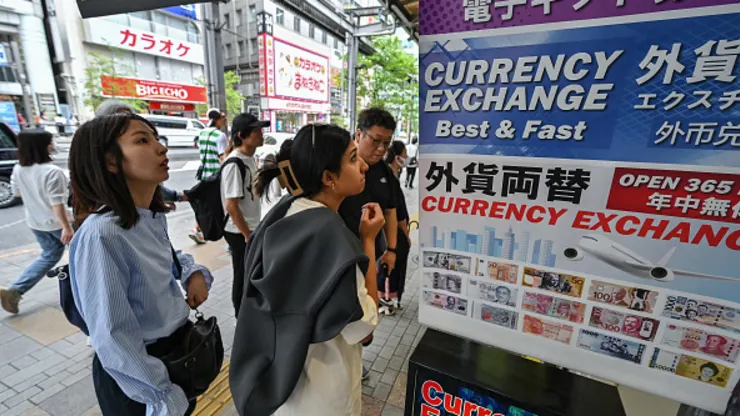
The dollar lost around 2% against the Japanese yen on Thursday as the market was suddenly jolted by fresh inflation U.S. data.
The yen traded at 158.55 against the U.S. dollar at roughly 3 p.m. London time after trading nearer 161.52 earlier in the session. It was the yen’s biggest daily rise since late 2022, according to Reuters.
The dollar slumped as market participants reacted to the lowest consumer price index reading in more than three years. Some currency experts highlighted the U.S. data for the yen move, with Kit Juckes, global head of foreign exchange strategy at Societe Generale, telling CNBC via email that the “driver of the yen rally is big shorts and a surprise in CPI.” Shorting involves betting that the price of an asset will fall.
But it comes at a time when traders are on high alert for more yen intervention from Japanese authorities as they try to prop up its ailing currency.
Marc Ostwald, a global strategist and chief economist at ADM Investor Services, said there was no concrete evidence for the intervention but added that it looked like the broad dollar sell-off “triggered by U.S. CPI hit some stop loss target levels above all in JPY, with a strong suspicion that the MoF [Ministry of Finance] may well have used the opportunity to intervene modestly.”
Stop losses are market orders that trigger if an asset hits a defined price.
Masato Kanda, the vice minister of finance for international affairs of the Ministry of Finance, told Jiji Press that he was not in a position to comment on any possible intervention. A spokesperson for the ministry wasn’t immediately available for comment.
Back in late May, Japan confirmed its first currency intervention since 2022 with a $62 billion spending spree. The ministry stated at the time that Japan had spent 9.7885 trillion yen ($62.25 billion) on currency intervention between April 26 and May 29.
This timeline coincided with a sharp rebound in the Japanese currency in the weeks prior. The yen had plunged to a 34-year low of 160.03 against the U.S. dollar on April 29. It later bounced to 156 levels later in that session, sparking speculation of a potential intervention by Japanese authorities.
The yen has been combating sustained pressure since the Bank of Japan ended its monetary policy of negative interest rates in March.
Japanese Finance Minister Shunichi Suzuki has backed the need for interventions, if sharp currency moves start to impact households and companies. He declined to comment at the time when asked whether the ministry had stepped in to prop up the yen.
Japan last intervened to stabilize the currency in October 2022, when the yen fell to lows of around 152 per U.S. dollar. Authorities intervened three times that year to stabilize the currency, reportedly spending as much as a combined 9.2 trillion yen over the period.





















